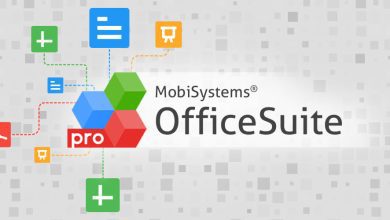AWS Web Console – Earning Menia – InvestMent Club
AWS Web Console
Navigating AWS Web Console: Your Portal to Cloud Mastery”
In the fast-paced world of cloud computing, Amazon Web Services (AWS) has cemented its status as a leader in providing an extensive range of cloud solutions. At the core of AWS lies the AWS Web Console, an intuitive web-based interface that serves as your gateway to the cloud. This article delves into the AWS Web Console, highlighting its essential features and showcasing how it empowers users to efficiently manage their cloud resources.
https://appkamods.com/maxlife-insurance/
Introduction to AWS Web Console
The AWS Web Console is a web-based user interface offered by Amazon Web Services. It functions as a centralized control hub, offering users seamless access to their AWS resources. Whether you’re provisioning virtual servers, setting up databases, configuring network resources, or managing storage, the AWS Web Console simplifies the process, making cloud management accessible to all.
Key Features of the AWS Web Console
1. Resource Management
One of the core functionalities of the AWS Web Console is its resource management capabilities. It provides a unified view of all your AWS resources, making it easy to monitor, manage, and organize them efficiently. Whether it’s instances, databases, storage, or networking components, the console offers a single dashboard to oversee all your assets.
2. Service Dashboard
AWS offers a plethora of services, and the console’s service dashboard offers an organized and user-friendly way to access each service. You can explore AWS services by category, making it convenient to discover and utilize the tools that best align with your needs.
3. CloudWatch Integration
AWS CloudWatch, the monitoring and observability service, is tightly integrated with the Web Console. Users can create custom dashboards, set up alarms, and gain valuable insights into the performance of their AWS resources, all from a single interface.
4. IAM Management
Identity and Access Management (IAM) is pivotal for securing your AWS environment. The Web Console facilitates user access management by allowing you to configure user permissions, policies, and roles. This ensures that only authorized individuals have access to your resources.
5. Billing and Cost Management
Understanding and managing AWS costs is vital. The AWS Web Console provides users with access to detailed billing information, cost allocation reports, and budget management tools. This feature empowers you to control and optimize your cloud spending effectively.
6. EC2 Instance Management
Amazon Elastic Compute Cloud (EC2) is a fundamental AWS service, and the Web Console streamlines the process of launching, configuring, and managing EC2 instances. Users can choose from pre-configured machine images (AMIs) or create custom instances, allowing for flexible and efficient virtual server deployment.
Navigating the AWS Web Console
Using the AWS Web Console is an intuitive process. Here’s a quick guide on how to navigate and leverage its features effectively:
1. Sign In to Your AWS Account
Begin by signing in to your AWS account using your credentials. If you’re new to AWS, you can easily create an account on the AWS website.
2. Dashboard Overview
Upon login, you’ll land on the AWS Web Console’s dashboard. This customizable view displays your most frequently used services, resource status, and billing insights, providing you with an immediate snapshot of your AWS environment.
3. Service Navigation
To access specific AWS services, utilize the “Services” dropdown menu located at the top left corner of the console. You can explore services by category or search for a specific service by name.
4. Resource Management
By clicking on a service, you gain access to its respective dashboard. From there, you can create, configure, and manage resources associated with that service. For example, you can launch EC2 instances, set up S3 buckets, or configure RDS databases.
5. IAM and Security
To manage user access and security settings, navigate to the “IAM” section within the console. This section enables you to create and manage user accounts, groups, roles, and policies.
6. Cost and Billing
For cost monitoring and billing insights, access the “Billing and Cost Management” section. Here, you can view detailed billing reports, establish budgets, and manage payment methods.

AWS Web Console: A Comprehensive Guide
The AWS Web Console is a web-based user interface that allows you to manage your AWS resources. It provides a simple and intuitive way to create, manage, and monitor your AWS services. You can use the AWS Web Console to perform a wide range of tasks, including:
- Creating and managing Amazon EC2 instances
- Creating and managing Amazon S3 buckets
- Creating and managing Amazon RDS databases
- Creating and managing Amazon VPC networks
- Creating and managing Amazon CloudFront distributions
- Creating and managing Amazon Lambda functions
- Creating and managing Amazon DynamoDB tables
- And much more!
The AWS Web Console is divided into several different sections, each of which provides access to a different set of AWS services. The main sections of the AWS Web Console are:
- Services: This section provides access to all of the AWS services that you are authorized to use.
- Console Home: This section provides a summary of your AWS account, including your recent activity, your current resource usage, and your billing information.
- Global Navigation Bar: This bar is located at the top of every page in the AWS Web Console and provides access to commonly used features, such as the search bar, the help menu, and your account settings.
https://appkamods.com/keyword-insertion/
To use the AWS Web Console, you will need to create an AWS account and sign in. Once you are signed in, you will be taken to the Console Home page. From here, you can click on the Services tab to view a list of all of the AWS services that you are authorized to use.
To manage a specific AWS service, click on the name of the service in the Services list. This will take you to the console for that service. The console for each service will provide you with access to the features and functionality that you need to manage that service.
Unlocking the Path to Profit: How to Earn Money by Uploading
For example, the Amazon EC2 console allows you to create, launch, and manage Amazon EC2 instances. You can use the Amazon EC2 console to start and stop instances, change the instance type, and attach and detach EBS volumes.
The AWS Web Console also provides a number of features that can help you to manage your AWS resources more efficiently. These features include:
- Tags: Tags allow you to add metadata to your AWS resources. This metadata can be used to organize and manage your resources, as well as to create billing and cost allocation reports.
- Filters: Filters allow you to narrow down the list of AWS resources that are displayed in the console. This can be helpful when you are working with a large number of resources.
- Search: You can use the search bar in the Global Navigation Bar to search for AWS resources, services, and documentation.
- Help: The AWS Web Console provides a comprehensive help system that can help you to learn more about AWS services and how to use them.
The AWS Web Console is a powerful tool that can help you to manage your AWS resources more efficiently. By learning how to use the AWS Web Console, you can save time and money.
Here are some additional tips for using the AWS Web Console:
- Use tags to organize and manage your resources. Tags are a great way to organize and manage your AWS resources. You can add tags to your resources when you create them, or you can add tags to existing resources. Tags can be used to filter and group resources, as well as to create billing and cost allocation reports.
- Use filters to narrow down the list of displayed resources. When you are working with a large number of resources, it can be helpful to use filters to narrow down the list of resources that are displayed in the console. You can filter resources by tag, by region, by instance type, and by many other criteria.
- Use the search bar to find resources, services, and documentation. The search bar in the Global Navigation Bar is a great way to find resources, services, and documentation in the AWS Web Console. You can search for specific resource names, or you can search for more general terms, such as “EC2 instance” or “S3 bucket.”
- Use the help system to learn more about AWS services. The AWS Web Console provides a comprehensive help system that can help you to learn more about AWS services and how to use them. The help system includes documentation, tutorials, and FAQs.
The Amazon Web Services (AWS) Web Console is a powerful, user-friendly interface that allows you to manage and interact with AWS services. It provides a visual way to navigate and manage the features of various AWS services, including EC2 instances, S3 buckets, and more.
https://appkamods.com/aws-amazon-vps/
Getting Started with AWS Web Console
To get started with the AWS Web Console, you first need to create an AWS account. Once your account is set up, you can sign in to the console at https://console.aws.amazon.com/. The console homepage presents you with a list of AWS services. You can select any service from this list to start configuring it.
Navigating the AWS Web Console
The AWS Web Console is designed for easy navigation. On the top navigation bar, you’ll find a Services dropdown menu that lists all available AWS services. You can also use the search bar to quickly find a service.
On the right side of the navigation bar, you’ll find account information and settings. Here, you can manage your account details, billing information, and security credentials.
Working with EC2 Instances
Amazon Elastic Compute Cloud (EC2) is one of the most commonly used services on AWS. To create an EC2 instance via the console:
- Select EC2 from the Services dropdown menu.
- In the EC2 dashboard, click on Instances in the left sidebar.
- Click on Launch Instances to start the process of setting up a new EC2 instance.
- Follow the prompts to choose an Amazon Machine Image (AMI), instance type, and configure instance details.
Managing S3 Buckets
Amazon Simple Storage Service (S3) allows you to store and retrieve data in the form of objects. To create an S3 bucket:
- Select S3 from the Services dropdown menu.
- Click on Create bucket.
- Provide a unique DNS-compliant name for your bucket and select a region.
- Configure options as needed and click Create.
If you are new to AWS, I recommend that you start by exploring the AWS Web Console. The AWS Web Console is a great way to learn about the different AWS services and how to use them. Once you have a basic understanding of AWS, you can start to use the AWS CLI or the AWS SDKs to manage your AWS resources.
Conclusion
The AWS Web Console is an indispensable tool that empowers users to harness the full potential of Amazon Web Services. Whether you’re an experienced cloud professional or a newcomer to AWS, the console provides a user-friendly interface for efficiently managing your cloud resources. With its resource management capabilities, service dashboards, CloudWatch integration, IAM management, billing insights, and more, the AWS Web Console serves as the central hub for your cloud operations. Embrace the console, and you’ll unlock the power of AWS at your fingertips, enabling you to build, deploy, and scale your cloud infrastructure with ease and confidence.
The AWS Web Console is a robust tool that simplifies the management of AWS resources. Whether you’re launching an EC2 instance or creating an S3 bucket, the console makes these tasks straightforward and intuitive. As you become more familiar with AWS services, you’ll find that the console is an invaluable resource for managing your cloud infrastructure.



